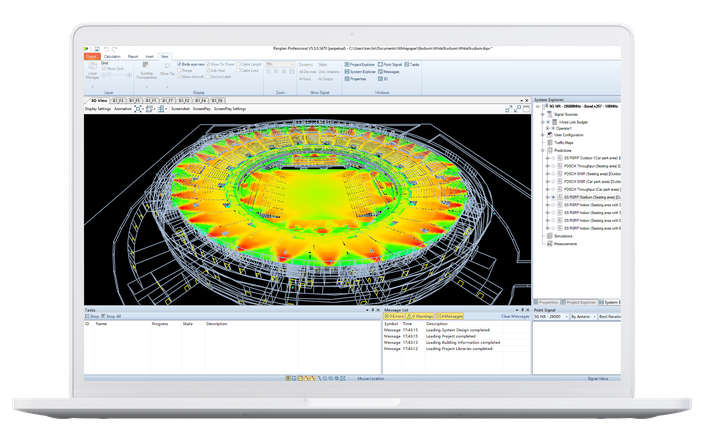
Just eight months after the last Critical Communications World in Madrid, a great opportunity to dive into new innovations and technological breakthroughs of public safety networks came again. For this year the exhibition took place in Vienna and despite the existing post-covid effects and worsen economic situation afflicting the world, the CCW 2022 reached fair enough attendance and pointed to how much the situation has changed, confirming that critical communication is even more indispensable than ever before.
The pretty well organized event welcomed again renowned names of vendors and innovative companies presenting cutting-edge products in the mission critical market and Ranplan could not miss it.

Our team was pleased to participate, discuss, and present different scenarios of Public Safety and Mission Critical Network Design with our partners, designers, and other industry experts from around the world.
Planning the adoption of LTE/5G broadband
Topics such as IoT for public safety, intelligent connectivity, migration from TETRA to 4G/5G mission critical broadband, hybrid base stations, dual band hybrid handsets and receivers, wearable cameras or futuristic IoT security sensors resonated all around the conference.
The discussions clearly clarified that not only is solid wireless coverage crucial, but other aspects such as adequate security, data protection or enough capacity are becoming real demands wherever critical users are working.
Conventional systems supporting operations based on spoken information and voice commands are no longer sufficient. Ensuring rich data in public safety systems is one of the key factors to enable critical teams and public safety organisations to improve their operations in critical situations with the benefit of video and other data transfer.
The data demand is driving the market to establish the cooperation of TETRA/DMR systems with capacity-oriented 4G/5G public safety networks or one step even further, the complete migration from conventional TETRA technologies to mission-critical broadband.
However, together with benefits from multimedia, apps, and new services, the migration will also be confronted with a range of technological and practical risks and challenges. For instance, disrupting the communication between systems or lack of signal coverage in complex premises. Such limits can easily occur until the different systems are fully ready to cooperate or if the public safety network design is underestimated. That’s why adequate downlink (DL) & uplink (UL) signal coverage and network capacity analysis, and simulations for different user-centric use cases were heavily discussed during the event.
How Ranplan can help public safety networks
Ranplan Professional is already confirmed as the dedicated network planning software that allows designers to model highly-detailed indoor premises with a variety of materials, together with an outdoor environment and help with analysing KPIs for independent network systems across different frequencies using its unique 3D ray-tracing predictions. So, with that capability, new or existing TETRA, PMR, DMR systems can be designed or optimized together with LTE or 5G public safety systems, inside and around your premises.


The simulation part of the Ranplan tool using the Monte Carlo process can simulate the coverage and capacity of LTE and 5G signals even for specifically defined public safety handsets. With such powerful tools, RF designers can avoid underestimating the public safety network design which must ensure extraordinary performance anytime a critical situation occurs.




